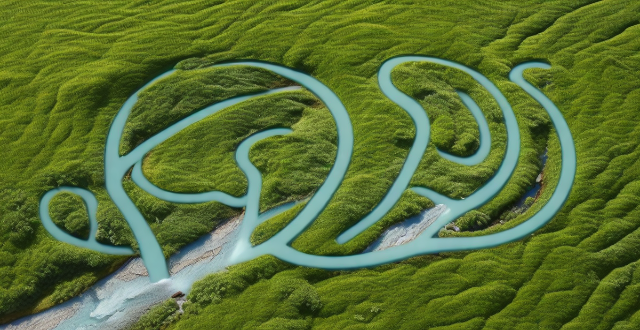Dams and reservoirs significantly alter downstream water ecosystems by changing water flow, trapping sediments, disrupting nutrient cycles, fragmenting habitats, and affecting biodiversity.

Effects of Dams and Reservoirs on Downstream Water Ecosystems
Dams and reservoirs are constructed for a variety of purposes, including water supply, hydroelectric power generation, flood control, and recreation. However, these structures can have significant impacts on downstream water ecosystems. Here are some ways in which dams and reservoirs affect downstream ecosystems:
Alteration of Water Flow and Temperature
Changes in Water Flow
- Reduced Flow: Dams regulate the release of water downstream, often resulting in reduced flow rates during dry seasons.
- Pulse Flows: Periodic releases from dams can create artificial high flow events that do not mimic natural flow patterns.
- Loss of Seasonal Variability: The natural fluctuations in water levels and flows that support diverse habitats are diminished.
Changes in Water Temperature
- Cold Water Releases: Deep releases from dams can be colder than natural river temperatures, affecting aquatic species that are sensitive to temperature changes.
- Thermal Stratification: Reservoirs can stratify thermally, releasing water at different temperatures depending on the season and depth of withdrawal.
Sediment Trapping and Starvation
Sediment Accumulation
- Erosion Upstream: Reservoirs trap sediments that would naturally flow downstream, leading to erosion upstream and reduced sediment load downstream.
- Starvation of Downstream Ecosystems: Many riverine habitats require regular inputs of sediment for maintenance and renewal, such as deltas and wetlands.
Disruption of Nutrient Cycles
Altered Nutrient Loads
- Nutrient Retention: Reservoirs can retain nutrients like nitrogen and phosphorus, reducing their availability downstream.
- Algal Blooms: When nutrients are released from reservoirs, they can stimulate algal growth, potentially leading to harmful algal blooms.
Habitat Fragmentation and Loss
Barriers to Fish Migration
- Blockage of Migratory Pathways: Dams prevent the migration of fish species, disrupting their life cycles and reproductive patterns.
- Habitat Fragmentation: The creation of reservoirs and the regulation of flow downstream can fragment formerly continuous habitats.
Changes in Biodiversity
Endangerment of Species
- Loss of Endemic Species: Some species may not be able to adapt to the altered conditions and could become endangered or extinct.
- Invasion of Non-Native Species: Altered ecosystems can be more susceptible to invasion by non-native species that outcompete native flora and fauna.
Conclusion
Dams and reservoirs significantly alter downstream water ecosystems by changing water flow and temperature patterns, trapping sediments, disrupting nutrient cycles, fragmenting habitats, and affecting biodiversity. These impacts must be considered when planning and operating these structures to minimize harm to downstream ecosystems and maintain ecological integrity.